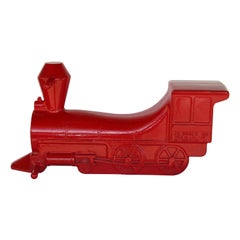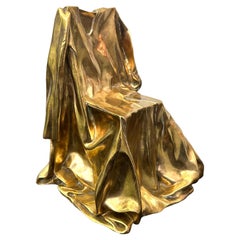Abstract Sculptures
1960s American Modern Vintage Abstract Sculptures
Aluminum
Mid-20th Century Italian Mid-Century Modern Abstract Sculptures
Art Glass
1960s American Modern Vintage Abstract Sculptures
Aluminum
Mid-20th Century American Mid-Century Modern Abstract Sculptures
Coral, Lapis Lazuli, Sterling Silver
Mid-20th Century Greek Mid-Century Modern Abstract Sculptures
Bronze
1960s Spanish Mid-Century Modern Vintage Abstract Sculptures
Aluminum, Bronze
Mid-20th Century American Mid-Century Modern Abstract Sculptures
Sterling Silver
1950s French Mid-Century Modern Vintage Abstract Sculptures
Ceramic
1960s French Vintage Abstract Sculptures
Marble
1960s French Vintage Abstract Sculptures
Wood
1960s Italian Mid-Century Modern Vintage Abstract Sculptures
Aluminum
Mid-20th Century American Mid-Century Modern Abstract Sculptures
Brass, Copper
1960s French Mid-Century Modern Vintage Abstract Sculptures
Plaster
Mid-20th Century British Brutalist Abstract Sculptures
Bronze
1950s Dutch Mid-Century Modern Vintage Abstract Sculptures
Pine
Mid-20th Century Mid-Century Modern Abstract Sculptures
Porcelain
Mid-20th Century English Abstract Sculptures
Pine
1960s Italian Vintage Abstract Sculptures
Brass
1950s Japanese Vintage Abstract Sculptures
Bronze
Early 2000s American Post-Modern Abstract Sculptures
Bronze
1950s Italian Mid-Century Modern Vintage Abstract Sculptures
Iron
1930s French Art Deco Vintage Abstract Sculptures
Ceramic
1950s Vintage Abstract Sculptures
Bronze
Mid-20th Century Mid-Century Modern Abstract Sculptures
Pottery
Mid-20th Century American Hollywood Regency Abstract Sculptures
Chrome
Mid-20th Century American Brutalist Abstract Sculptures
Stone, Metal, Brass
Mid-20th Century Israeli Brutalist Abstract Sculptures
Aluminum, Steel
Mid-20th Century French Space Age Abstract Sculptures
Terracotta
Early 2000s Indonesian Abstract Sculptures
Wood
1950s Danish Scandinavian Modern Vintage Abstract Sculptures
Maple
1960s French Brutalist Vintage Abstract Sculptures
Iron
1950s Italian Mid-Century Modern Vintage Abstract Sculptures
Murano Glass
Mid-20th Century American Industrial Abstract Sculptures
Brass
Mid-20th Century American Post-Modern Abstract Sculptures
Malachite
1960s American Mid-Century Modern Vintage Abstract Sculptures
Bronze
Mid-20th Century Italian Mid-Century Modern Abstract Sculptures
Blown Glass, Murano Glass
1960s Japanese Vintage Abstract Sculptures
Cedar
Mid-20th Century Abstract Sculptures
Art Glass
Mid-20th Century American Mid-Century Modern Abstract Sculptures
Marble, Brass, Chrome
Mid-20th Century Italian Modern Abstract Sculptures
Murano Glass
1960s Italian Vintage Abstract Sculptures
Ceramic
1960s American Mid-Century Modern Vintage Abstract Sculptures
Aluminum
Mid-20th Century Unknown Mid-Century Modern Abstract Sculptures
Oak
Mid-20th Century American Mid-Century Modern Abstract Sculptures
Pottery
1940s Italian Mid-Century Modern Vintage Abstract Sculptures
Murano Glass
Mid-20th Century French Space Age Abstract Sculptures
Terracotta
Mid-20th Century Ivorian Tribal Abstract Sculptures
Wood
1930s Brazilian Art Deco Vintage Abstract Sculptures
Wood
Mid-20th Century French Space Age Abstract Sculptures
Terracotta
1960s French Vintage Abstract Sculptures
Stainless Steel
Mid-20th Century French Space Age Abstract Sculptures
Concrete
1950s American Mid-Century Modern Vintage Abstract Sculptures
Marble
1960s Italian Mid-Century Modern Vintage Abstract Sculptures
Iron
1960s French Vintage Abstract Sculptures
Stainless Steel
1950s Danish Vintage Abstract Sculptures
Plastic
1960s Unknown Mid-Century Modern Vintage Abstract Sculptures
Oak
1950s French Vintage Abstract Sculptures
Steel
1960s American Brutalist Vintage Abstract Sculptures
Wrought Iron
Find Abstract Sculptures and Other Fine Sculptures for Your Home
Abstract sculpture has evolved over time with artists making a variety of striking statements in stone, bronze, ceramic and other materials. In the collection of abstract sculptures on 1stDibs, you are sure to find a piece that is perfect for your space.
When exploring how to arrange furniture and decor, consider color, texture and what kind of energy it should evoke. Abstract sculpture can elevate any home through its many decorative possibilities.
Auguste Rodin is often called the father of modern sculpture for his pioneering naturalistic forms and figures that vividly express emotion. His work in the 19th and early 20th centuries broke with artistic conventions and inspired modernism, leading to a new period of avant-garde abstraction.
Pablo Picasso and Georges Braque were among the first artists to push abstract sculpture into the mainstream. They helped define the Cubism movement, which focused on deconstructing the world abstractly. Other 20th-century artistic movements, including Italian Futurism, Dadaism, Neo-Dadaism, Surrealism, Abstract Expressionism and Minimalism, all contributed to the advancement of abstract sculpture. Italian Futurism, for example, celebrated movement, dynamics and technology in abstract sculpture. These movements continue to inform abstract sculpture today.
With abstract art — sculpture, painting or a grouping of prints — a work can complement a living room, dining room or other space, or it can act as a bold focal point.
Browse a range of modern abstract sculptures, postmodern abstract sculptures and other sculptures on 1stDibs.





